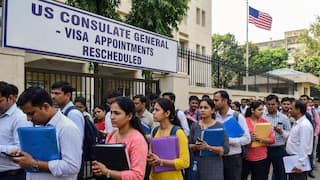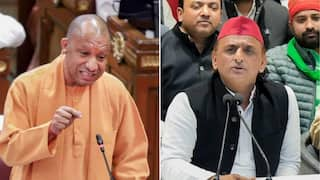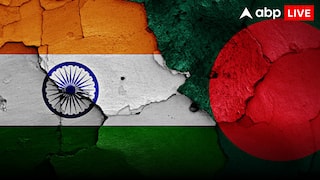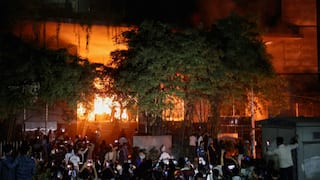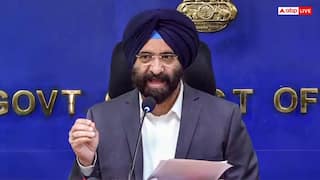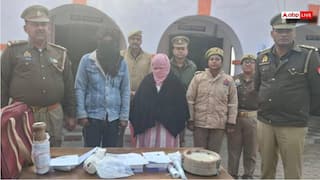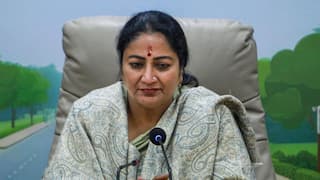Opinion | What Does Agnipath Scheme Mean For India’s National Security? Expert Explains

The Agnipath Scheme transforms India’s military recruitment approach. Addressing critical issues such as operational effectiveness, pension obligations, attitudinal alignment to current realities, and the age profile of soldiers, this initiative addresses the Indian armed forces’ concerns about how to remain organisationally agile and enhance the intake of technologically recipient human capital, thus preparing for future challenges.
Bridging Operational Effectiveness & Economic Constraints
The realities of a democracy and an autocracy vary diametrically. In a democracy, we must balance every segment of society and meet multiple aspirations. Resource constraint is a reality. One of the primary objectives of the Agnipath scheme is to address the financial challenges posed by pension obligations, which account for a significant portion of the defence budget. By restructuring our approach to military service, the scheme aims to gradually reduce the pension allocation.
Experts with different perspectives opine that economic considerations should not be at the expense of national security. However, resource constraints will be a significant challenge for a developing economy. Therefore, well-balanced defence budgets over a sustained period are imperative for long-term operational efficiency and effectiveness, balancing national economic and security challenges focussed against identified adversaries adept at multi-domain threat generation.
Recruiting young, trainable, aspiring personnel, given the challenge to excel right from their career initiation, enhances our operational readiness and ensures fiscal prudence. Attitudes of assured and permanent careers immediately after donning the uniform will change to performance excellence to be retained. Thus, the organisation would carry the best who contribute.
ALSO READ | Breaking Barriers: Agniveers Pave The Way For Women In Uniform
Financial Prudence From Available Options
The savings, appearing meagre, from reduced pension obligations should be internally reallocated towards advanced weaponry, research and development, and enhanced training programmes. This internally generated financial flexibility is one of the ways to adapt to rapidly changing geopolitical landscapes and emerging threats in new domains of warfare. Additional funds should be invested in quality and autonomy generation by developing indigenous defence products, reducing dependence on foreign suppliers, developing resilient and trusted supply chains, and fostering an employment-generating self-reliant defence ecosystem.
The outcomes of these internal investments would, over time, contribute to the nation’s economic growth due to the domestic defence industry growing to higher levels, reducing wastage of foreign exchange and earning foreign exchange from increased exports of defence products. However, this will need many additional measures in a whole nation approach well beyond the defence ministry. The nation has seen the evils of monolith industries, which consume more and produce erratically without being globally competitive. The infusion of inspired youth in such sectors after their combat experience will also contribute to national economic growth.
Technological Growth: The Key To Modern Warfare
Modern military operations are increasingly reliant on advanced technology. The Indian Army’s infusion of youth who are more skilled and amenable to using technological gadgets is a step towards transforming mindsets. Integrating technology at every level is a combined effort of niche equipment and intelligent human capital. Recruiting trainable and keen human resources capable of learning new methods of warfare, willing to get skilled to handle new gadgets, and adapting to new technology upgrades in a rapidly evolving security environment will enhance national security.
The Indian Army has sought applications from pre-skilled youth with ITI/Polytechnic qualifications under the ‘Agniveer Technical’ category. This initiative broadens the recruitment pool, allowing us to harness the potential of 10th-pass candidates with technical diplomas. This approach reduces training time and increases our recruits’ technical proficiency, ensuring their effectiveness in their roles early and with ease.
ALSO READ | 25 Years Of Kargil: Why India Needed An Agnipath-Like Scheme
The Importance Of Technologically Oriented Soldiers
Technologically oriented soldiers significantly enhance any Army’s capabilities across various domains, impacting national security. Every individual’s proficiency in operating sensors, cameras, unmanned systems, surveillance equipment, and electronically powered firing systems ensures enhanced situational awareness and lethality on the battlefield and higher resilience to battlefield losses.
These soldiers are expected to gather real-time information, providing inputs for intelligence generation and empowering commanders to make informed decisions. Attrition on the battlefield, especially of specialists, does cause a dent in a sub-unit capability, but if every individual is equally skilled at handling modern gadgets, the level of resilience in sub-units will invariably be high. Improved communication is a necessity.
Technologically adept soldiers who can easily use advanced communication tools will facilitate seamless and timely information exchange between personnel, sub-units, units and formations, which is essential in today’s battlespace. This capability is vital for coordinating complex military operations efficiently and effectively in a tri-services integrated environment. The Indian Army’s arsenal includes sophisticated weapons systems that require specialised training for optimal use. Such equipment will continue to increase in quantum and complexity.
Technologically oriented soldiers quickly learn to handle these advanced weapons, significantly enhancing combat effectiveness. The confidence and proficiency in handling such equipment also give confidence that negligent or ignorant handling of such costly equipment will not impose losses on the organisation. Their proficiency with modern weaponry ensures that the Indian Army can maintain a competitive edge in various operational scenarios.
As our reliance on technology grows, so does the need for robust cybersecurity measures. As we grow digitally, our vulnerabilities continue to grow. The need of the hour is to have capable soldiers who confidently handle devices rather than avoid using them due to the fear of making mistakes. Security-oriented and attitudinally shaped soldiers are crucial in implementing these measures, protecting our military infrastructure from digital threats. Their expertise in cybersecurity ensures that the Indian Army remains resilient against cyberattacks, safeguarding sensitive information and retaining operational capabilities.
Preparing For Future Challenges
The Agnipath scheme is designed to create a younger, situationally aware and more agile force within the military and civil society, which is essential for national security. Non-traditional warfare is extremely dangerous to the weak links in civil society; the new scheme would ensure that these new-era war challenges are better addressed by an outflow of combat-experienced human capital in civil society, which depends only on the government to protect it. Field reports indicating the effectiveness of new training methodologies, complemented by ongoing on-the-job training, mitigate concerns about the optimised training periods.
ALSO READ | Agniveer Recruitment: How Transparent And Fair Is Agnipath? Expert Weighs In
Attrition Warfare
Many myths have been busted in recent times. Armchair strategists have been vocal in propagating that the era of conventional wars is over, and, if there is a war, it will be a short war because the international community will intervene. Any sensible person must correlate with the events in Europe and West Asia. Without a formal declaration, the wars have been in progress for years. The international community is busy selling weapons and waiting to get in for reconstruction programmes where profits are to be repaid.
In our context, we must see the tremendous number of frontline troop casualties.
Each of the warring parties has a strong line of reservists. The national resilience is visible with a youthful pool of reservists. We need to introspect on our level of preparation in this segment. Let us not presuppose that every conflict will be a short one and a swift victory like 1971. In the military, the dictum is ‘Hope for the Best but Prepare for the Worst’. Let us prepare our youthful reservist pool. Beyond such a step, these reservists must be trained periodically.
My memory fails me if we have ever done it in the recent past.
Addressing Demographic Challenges
The military’s youthful profile enhancement is critical to operational readiness and national security. Younger soldiers are typically more risk-taking, physically better prepared, mentally adaptable, and capable of enduring the rigours of deprivation in combat. By transforming the recruitment and training process, the Agnipath scheme ensures that the Indian armed forces would be physically better prepared, attitudinally more responsive, and technically more receptive.
ALSO READ | Expert Speak: How Agnipath Scheme Is Equipping The Youth Through Training
Beyond Basic Level
Beyond the initial period of four years, the selected personnel would undergo advanced training for more challenging tasks. Technically qualified soldiers receive advanced training and certifications, enabling them to operate sophisticated equipment and perform complex tasks. They may also attend specialised schools and courses to enhance their skills and knowledge. The selected personnel would be assets in every way. The contribution of these soldiers would be indispensable to the success of military operations.
A Bold & Necessary Step
The Agnipath scheme represents a bold and necessary step towards modernising India’s military. It requires wholehearted support from all segments of society, and effective change management from the serving fraternity. Decisions taken by the hierarchy are always mandated to be implemented in the military, which makes it different from the civvy street. Debates and discussions on public platforms regarding decisions are distracting to the in-service community.
The senior and middle-level leadership has a responsibility to bring effective change management. Those engaging in debate in the media would be far away from decision-making and even farther away from actual combat. The responsibility to shape the organisation rests squarely within the military and should be viewed from that perspective.
Lt Gen. Vinod Khandare (Retd) is the Principal Adviser to the Ministry of Defence.
[Disclaimer: The opinions, beliefs, and views expressed by the various authors and forum participants on this website are personal and do not reflect the opinions, beliefs, and views of ABP News Network Pvt Ltd.]














